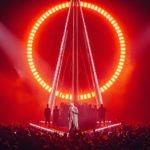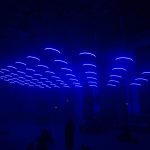 I belong to a group of people who would sooner wrestle an alligator than to have to plan ahead. There’s even a name for people like us—men. We don’t make lists before we go to the store, or plan routes before we drive across the country, and we don’t put on our blinkers before we change lanes. Most of the time, we don’t even know we’re going to change lanes until we see all the cars around us scrambling to get out of our way. But give me a job where thousands upon thousands of dollars are at stake, and I’ll be the first to hike up my skirt and wade through the deep waters of planning and plotting.
I belong to a group of people who would sooner wrestle an alligator than to have to plan ahead. There’s even a name for people like us—men. We don’t make lists before we go to the store, or plan routes before we drive across the country, and we don’t put on our blinkers before we change lanes. Most of the time, we don’t even know we’re going to change lanes until we see all the cars around us scrambling to get out of our way. But give me a job where thousands upon thousands of dollars are at stake, and I’ll be the first to hike up my skirt and wade through the deep waters of planning and plotting.
But when it comes to planning and documenting a lighting design, which end is up? How do you effectively communicate to other people which materials and supplies will be needed and how the system is to be laid out, patched and focused?
In the theatre, most every show is virtually wallpapered with documentation; light plot, instrument schedule, channel hookup, circuitry schedule, dimmer schedule and shop orders are common. Most theatrical lighting designers learn how to document a show in school or by apprenticing with an experienced lighting designer. There are also a number of excellent books detailing how to create good documentation for a theatrical show. A determined individual could learn all they need to know about paperwork by reading the right books. My favorite is Steve Shelley’s A Practical Guide to Stage Lighting (Focal Press, 1999). There is an entire chapter detailing a standard light plot, lighting sections, instrument schedules, channel hookups, circuit schedules, dimmer schedules, shop orders and more. If you read and understand that one chapter alone, then you can at the very minimum talk the talk.
Books about documentation for permanent installations, on the other hand, are a little harder to come by in our circles. Unless you’ve studied architecture or engineering a lot of the documentation might be foreign to you. Some of it, like the light plot, is very similar to theatrical paperwork. But electrical plans, riser diagrams, one-line diagrams and panel schedules are not typically taught in entertainment lighting curriculums.
Whether we’re creating paperwork for a concert, the theatre or a permanent installation, the idea behind it is the same. Good documentation should convey enough information so that a trades-person who is unfamiliar with the project can recreate it, exactly as the designer conceived it, using only the paperwork. The idea is to minimize the number of questions that an installer or stage hand might have about putting the show together.
Central to the paperwork is the light plot, which is a scale drawing of the lighting and related components drawn from the point of view of an observer hovering over the lighting system and looking down on it. This is known as a plan view. It indicates the exact location of each luminaire and device in the system with a symbol that is unique to each type of luminaire or device. The symbols can be 2D or 3D (for various views such as elevations or isometric views) simplified drawings of the instrument, they are often called “blocks.” These blocks are usually stored in a library of commonly used blocks with associated information such as their DMX512 protocol, candlepower, beam and field angles, voltage and power requirements, weight and more.
On the plot, various bits of information might be displayed with each luminaire or device, including the starting DMX512 address (if applicable), channel number, circuit number, dimmer number, color, gobo, focus and any other useful information. If the CAD software links to a visualization program then there will be additional information needed in order to virtually control the luminaire. For example, if the light is an automated wash fixture then the block will contain information about the type of color changing capabilities it has and their respective DMX512 assignments. That is in addition to the rest of the DMX512 protocol, the candlepower, beam and field angles, etc.
In a CAD drawing, a light plot is typically drawn full size with a one-to-one relationship. When it’s plotted to paper, it is scaled so that it will fit on the paper. The scale will vary, but it is typically from quarter-inch to half-inch depending on the size of the rig and the size of the paper. A half-inch scale means that half-inch on the plot is equal to one foot in real life.
If the rig is to be assembled by experienced stage hands, then the details on the light plot are not quite as demanding as for a crew of inexperienced hands or trades people outside of the entertainment industry because stage hands are typically very familiar with the equipment and the procedure while other trades people are not. For example, if an electrical contractor has been subcontracted by a general contractor to install the electrical system, then the lighting designer might ask them to also install a raceway with a schedule 40 pipe on which to rig the lights. In that case, the light plot, in addition to showing the location of the lights, might also indicate the exact location of each electrical receptacle. The plot might also be accompanied by a detail drawing of the raceway, pipe and accompanying hardware such as a pipe clamp and receptacle, showing how it should be constructed. Any other special instructions are subject to much detail as well.
There are many other things to know about preparing paperwork for a show or an installation, far more than will fit in this space. In the next issue, we’ll discuss the pros and cons of using your blinker.


